Homeopathy is beneficial in treating injury, either by way of first aid or post hospital care. It can and has been usefully used in the hospital and clinic. However, current medical practice is for the most part resistant to old wisdom.
Drawing on Dr Roger Morrison’s Desktop Companion to Physical Pathology, in this blog I will consider bruises and wounds.
The goal of homeopathic treatment is accelerated healing. The management of injuries as followed in general medical practice, and taught by first aid organisations still applies.
Homeopathic remedies are potentised ultra-dilutions. They are not bio-chemical medicines. Rather they act energetically or (I prefer) informationally to stimulate the innate healing potential of the body. By analogy in this information age, a software download. Thus, they are of particular value where the healing process is slower than anticipated. Homeopathic remedies are not generally required for minor incidents.
With a few exceptions the majority of homeopathic remedies used in treating injury (termed vulneraries) are of plant origin. Interestingly, several sit within a single plant family – the Asterales, also known as the Compostitae. That this should be so, surely indicates that Creation is anything but haphazard. Here are the main examples:
As an aside, recall from your childhood the relationship between the nettle (Urtica urens) and the common dock (Rumex). You ease the sting of the nettle by rubbing with the dock leaf. In this case different plant families, yet often found growing together. (Homeopathically both remedies have itching of the skin as a keynote; a small example of the like cures like homeopathic principle).
Let’s consider some plants in homeopathic practice that are beneficial in treating injury:
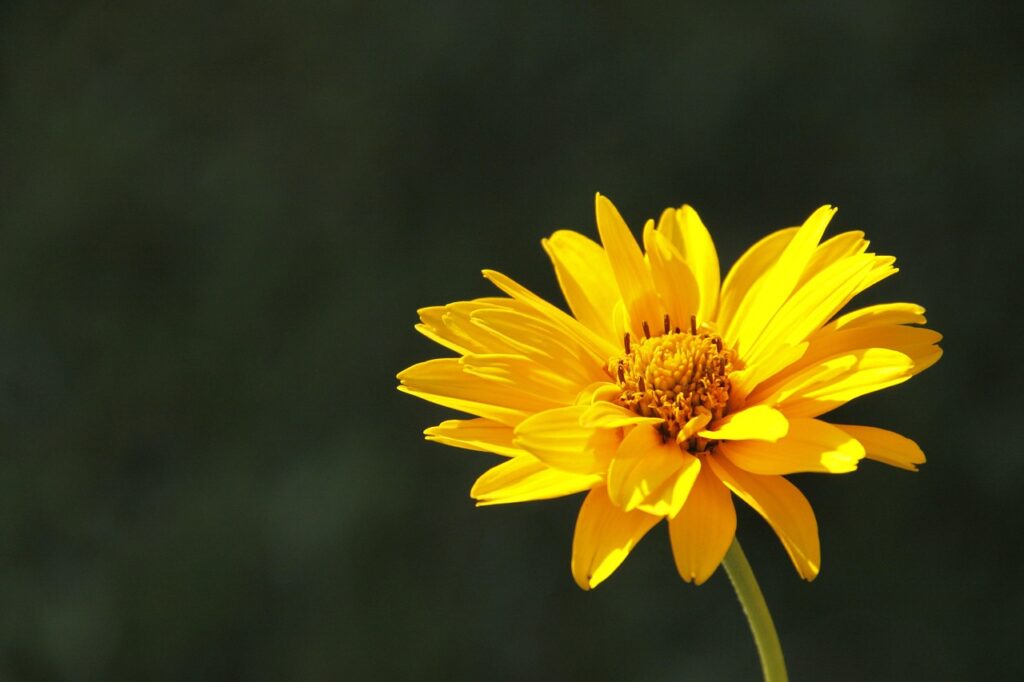
Even those unfamiliar with homeopathy, have likely heard of arnica. Commonly, used as a cream or ointment containing tincture of the plant and used for strains, contusions and muscle soreness.
A tincture is usually an extraction of the plant (or part of) preserved in an alcohol water mixture. Tincture in 10% alcohol is a typical starting point in the homeopathic process of making a potentised remedy.
Do not use Arnica tincture or herbal cream on an open wound as will cause irritation.
The guide word for arnica is BLUNT trauma. Minor bruises do not need homeopathic treatment though topical use of a salve will do no harm.
Homeopathic arnica comes into its own after severe trauma leading to deep bruising. The sort of trauma following a fall, car crash or surgery. In such cases it is the No.1 remedy. In the event that shock is predominant then first give Aconite (see later).
Interestingly Arnica also has an affinity to past trauma. I recall a case taken by the remarkable Prof. George Vithoulkas (still working and in his 90s) when attending a course at his academy in Greece. The patient had been badly assaulted years ago. She had not been well since. Vithoulkas opened the case with homeopathic Arnica!
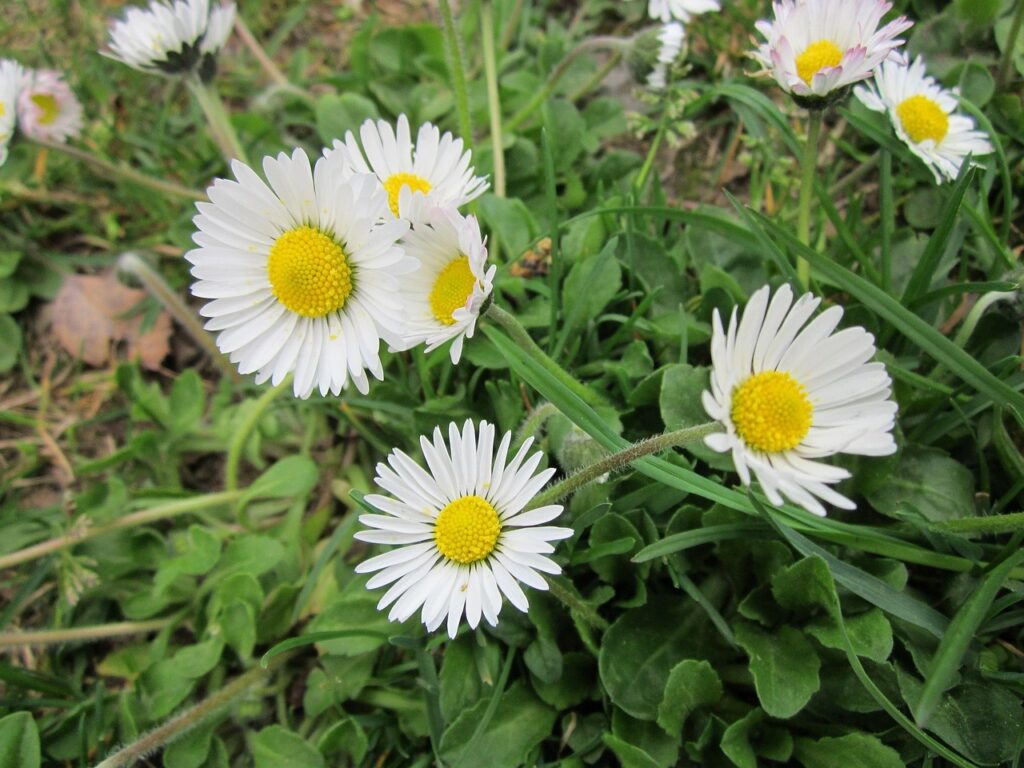
This is the common daisy. Similar to Arnica, but it has particular affinity in cases of surgery to soft organs and blunt trauma to the abdomen or pelvis (including the womb – say, in pregnancy).
It is also a remedy where there has been injury to the nerves.
Apparently, the late Dr James Compton-Burnett, spoke of it being a ‘princely remedy for old gardeners’. In other words of benefit to those overusing their muscles a great deal. Perhaps less of a hazard in this machine age. In my text book I find this remedy also as the No.1 for twisted ankles.
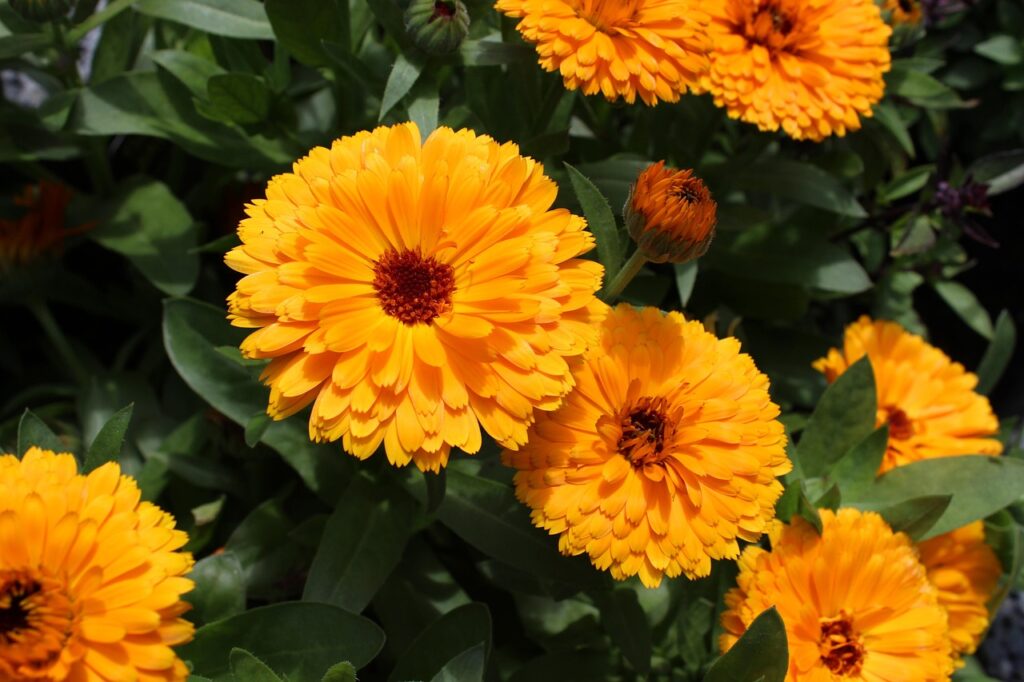
The marigold. ‘The’ remedy to prevent infection and promote healing in clean cut wounds. Also valuable in slow healing ulcers and simple (first degree) burns.
It can be used externally (topically) as tincture or salve and/or internally in homeopathic potency.
Various creams are available over the counter. However, a few drops of mother tincture in boiled and cooled (i.e. sterile) water dabbed onto the wound is equally effective.
An eyewash prepared in a similar way, can ease abrasion of the eye. Ditto a mouthwash after dental procedures (it has haemostatic – stops bleeding – qualities).
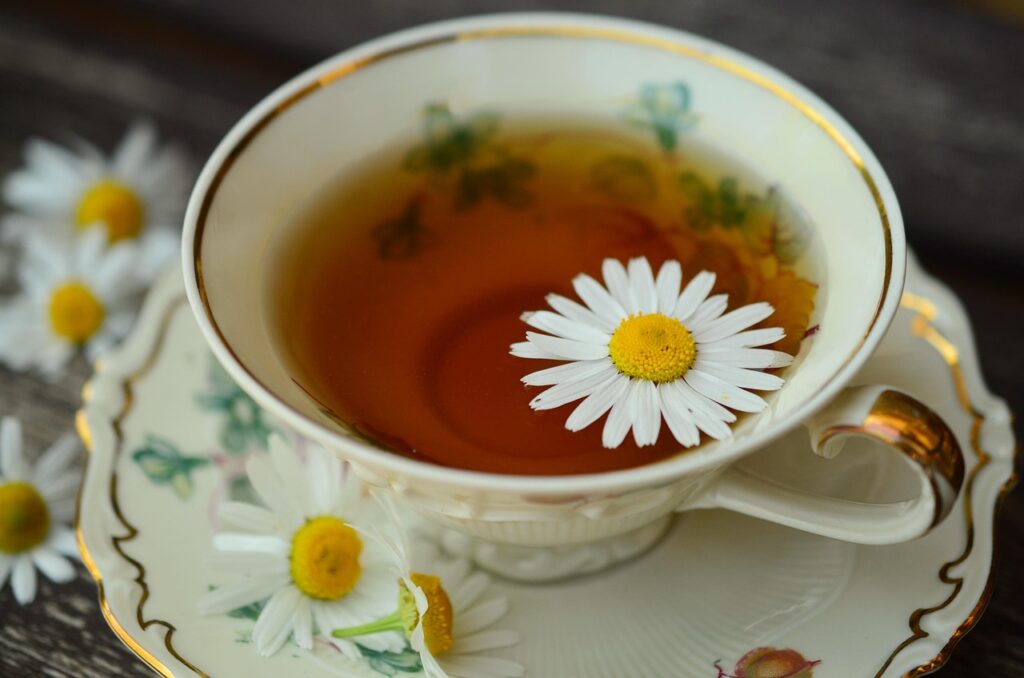
Camomile – more familiar as an infusion, perhaps. Another daisy. In this case to calm pain.
Dr Margaret Tyler was another famous homeopath from the past suggested and alternative name, “cannot bear it”. Chamomilla is a remedy for pain. The general keynote is sensitivity beyond that which might be expected. Hahnemann apparently said not to give chamomilla where sickness is borne with calmness and patience. It gains its place in settling teething children who are unconsolable. Given a toy they throw it away. Only when the child is carried around is there relative ease.
Similarly the adult in pain must pace the floor, so one might think of its use in certain type of toothache.
We move to a different plant family. If you are a gardener, you will be familiar with Hypericum or St. John’s Wort.
This remedy is for wounds to areas dense in nerves. Think of crushing wounds such as fingers caught in a closing door.
Mentioned also is pain lingering after an epidural or episiotomy or even an amputation.

Sometimes known as Marsh Rosemary and in the Rhododendron family.
In common with hypericum, this remedy is for puncture wounds. No.1 for the effects of bites or stings (insect or animal) or stepping on nails, staple guns or such like.
Can be useful in Plantar Fasciitis (heel and arch pain in the sole of the foot)
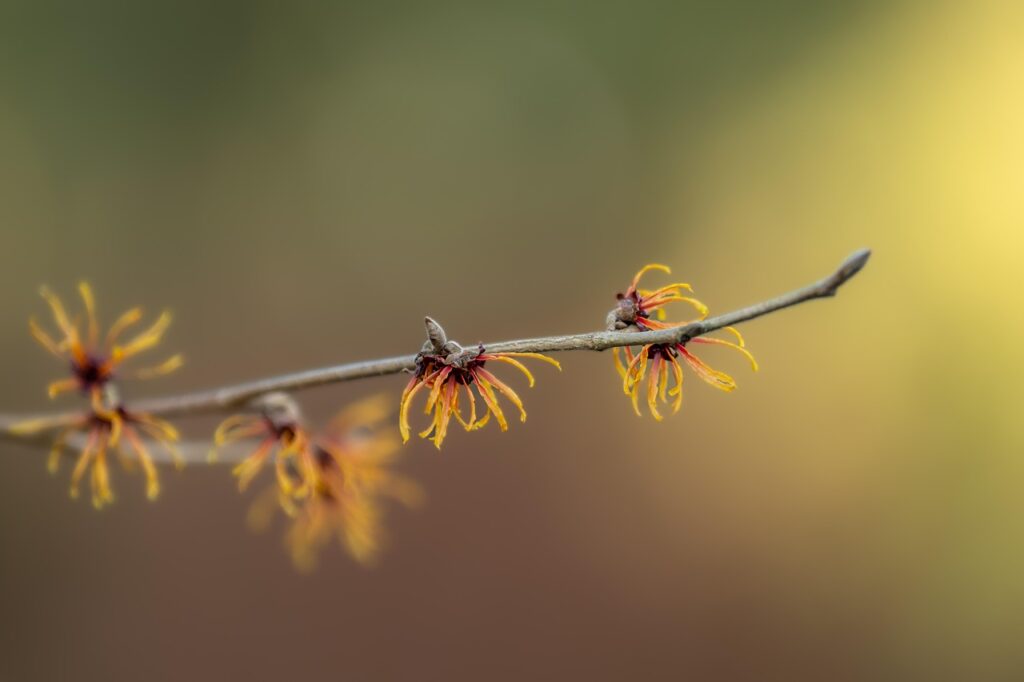
Better known as Witch Hazel. What arnica is to soft tissue, hamamelis is to oozing congestive haemorrhages such as inflamed veins and surrounding tissues. Varicose veins come into this category and haemorrhoids (piles) which are simply varicose veins of the rectum.
A specific remedy for bleeding inside the eye after trauma.
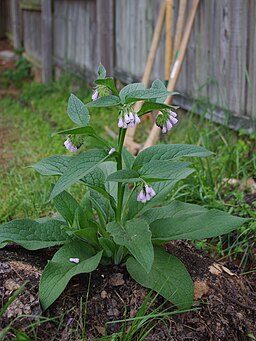
This plant better known to gardeners as Comfrey is also worth a mention. Its specific ‘talent’ is in the healing of fractures (after properly set in place by the orthopaedic department).
To quote “In the case of a fracture a surgeon’s aid is indispensable. At all events, a few doses of Arnica should be administered as it does good in many ways. After the bone has been set …symphytum should be administered internally for a … week or more”. The late Dr Bhanja of Calcutta (The Homeopathic Prescriber).
Finally, I wish to mention Aconite Not in the specific context of physical trauma, but SHOCK following trauma. The mental keynote for Aconite is “anguish of mind and body; the restlessness; the disquiet not to be allayed.” Ailments caused by fear and fright; fear of death.
Give Aconite first if there is shock. Arnica can follow.
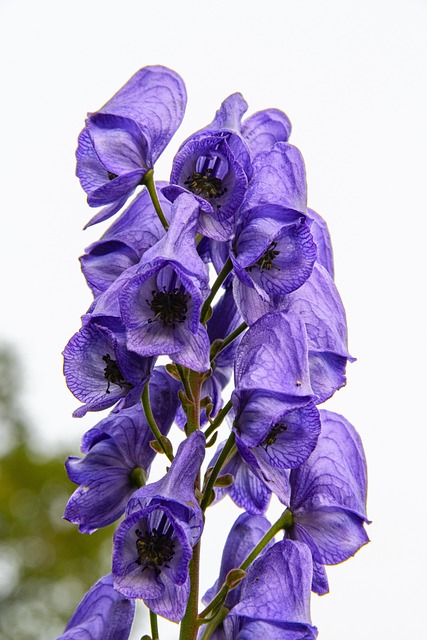
Standard advice is to give nothing by mouth whilst awaiting the paramedics etc. Homeopathic remedies can still be given in this spirit. If you have a homeopathic first aid kit, one pill can be put in a little water and a teaspoon given. Or just moisten the lips. And if there’s no water to hand, a tiny pill popped into the mouth still presents no hazard.
***
Should you need advice on recovery from some trauma, be it physical or emotional please get in touch. I offer a free half-hour discovery call which you can book via my website. Or send an email to [email protected]
The Society of Homeopaths asked me to write a book review in which the author shares some thirty homeopathy real life case studies and testimonials. The book titled The Joy of Homeopathy is authored by North Yourkshire Homeopathy, Em Colley. This blog is based on that review.
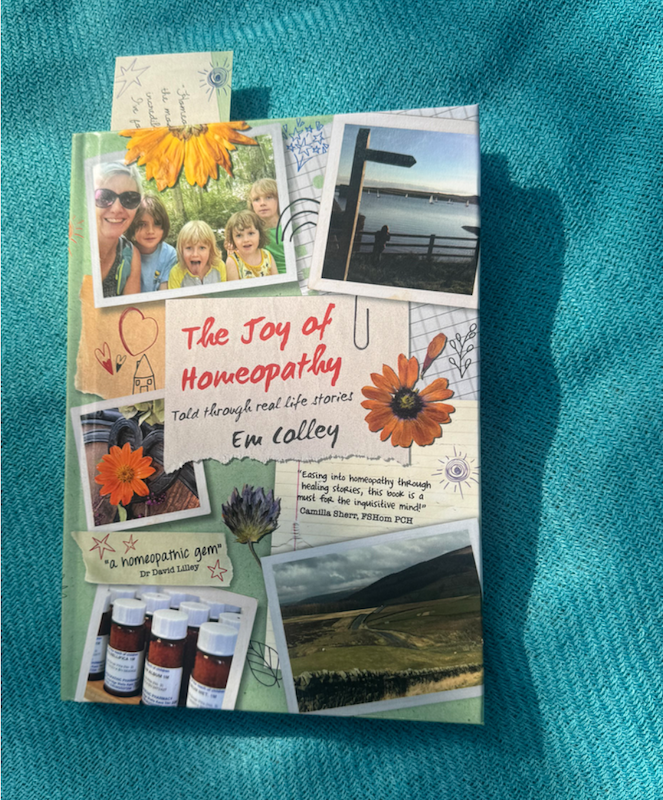
Emma (‘Em’) Colley is a graduate of the North West College of Homeopathy. She has practiced homeopathy for some 18 years, and today also teaches and supervises students.
Chapter one relates the story of her teenage companion (a horse), Kara. Kara had a chronic eye inflammation and was a risk of losing an eye. She was healed by homeopathy.
[btw note that animals only Vets are permitted to treat animals].
Em says that her ‘intention in writing this book is to help [the reader] gain a greater understanding of homeopathy and what it can achieve’. Clearly her intention is also to spread the word, and so this is a book for the interested lay reader. Nevertheless her ‘joy’ resonates equally with the professional.
Her opening chapter, ‘What is Homeopathy’, gives an important resumé of the philosophy and principles of homeopathy including its Laws. Of these the most important is the law of similars (in short – like cures like).
Generally speaking, in homeopathy, symptoms reflect the curative effort of the organism which should be supported and not suppressed. (I note that I have not covered this topic for some time, so it is one I must revisit soon).
The next chapter contrasts the homeopathic and conventional approaches (this is a topic I have touched on recently). She reflects on those skeptical of the therapy. Her wish is that ‘the two opposing schools’ might work together harmoniously for the benefit of all.
She writes that ‘the proof is in the pudding’. So, in magazine style Em goes on to summarise some 30 cases, from patients young and old. These are grouped according to the focus of the complaint (e.g. headaches, respiratory, skin, mental health etc.). Patients are of all ages. This is clever, as the breadth of the potential of homeopathic treatment becomes apparent. And it is also important as even patients sympathetic to the therapy are apt to limit its potential.
The opening story about her horse is a case in point. A blog from retired GP and homeopath Dr Bob Leckridge comes to mind here. He recalls advice given during his GP training to think twice before sending a patient to a ‘man with a knife’! None deny that surgery has its place but the risk and consequences have to be weighed.
Chronic illness is often debilitating. Em laments for those who needlessly suffer because ‘there is nothing more that we [orthodoxy] can do’.
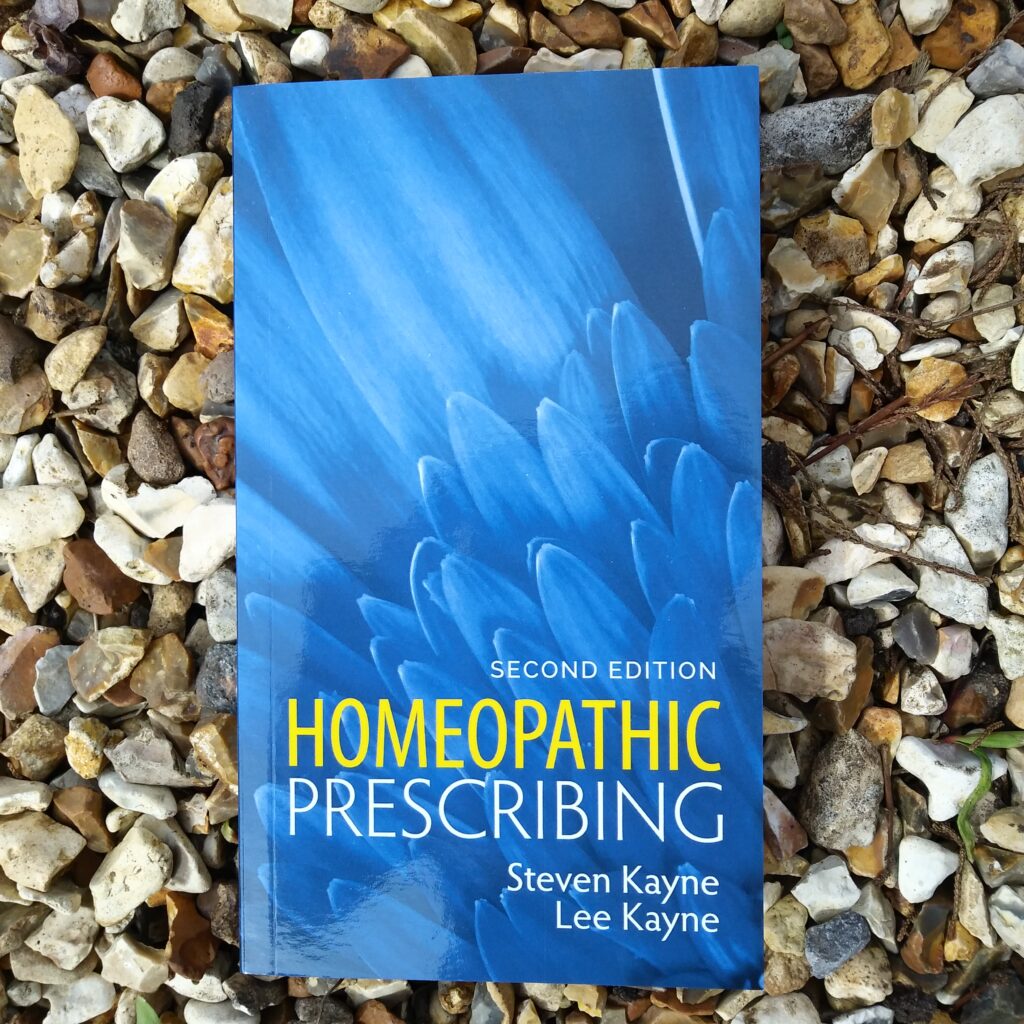
In the closing chapters Em shares some close family experiences of homeopathy used alongside conventional medications and post operatively.
Em reveals the homeopathic process to the reader almost subliminally. There are greater depths to find on second reading. What does come across is the care and time she takes in analysing each case. This is also reflected in the words of her patients who write of their experience.
I have blogged previously on the importance of the homeopathic consultation.
In a book of ‘Joy’, the challenges and frustrations of homeopathic prescribing in an impatient and sceptical world, have less emphasis. Neither are they denied, however.
She makes the important point that ‘Homeopathy is not a miracle cure’. Nor is it a quick fix.
Increasingly now, I make it clear to patients / clients that longer standing conditions take time to resolve. Children respond quicker because they have not had time to accumulate many health issues. The clue is in the name – ‘patient’!
Her joy is in listening, in witnessing healing; in learning and collaborating. These sum up her motivations in the conclusion to this thoughtful and readable work. It comes as an encouragement to all those curious and open to the healing art.
May I encourage you to investigate whether homeopathy can help with your health needs? I offer a free half-hour discovery call which you can book via my website. Or send an email to [email protected]
****
The use of homeopathy for uncomplicated urinary tract infection or UTI is the subject of this article. It is a condition more common in women due to the relatively short urethra (tube from the bladder to the outside). A common name for this type of infection is Cystitis.
Urinary tract infection and retention in men is often secondary to another issue such as prostate problems.
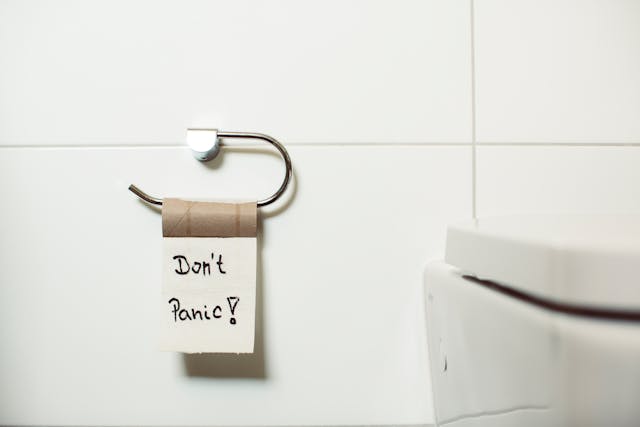
If you follow my blogs you will know that Classical Homeopathy follows the ‘law of similars’. Simply put this means that the characteristics of the ailment as experienced by the patient must match the ‘picture’ of the homeopathic medicine / remedy.
The typical UTI ‘picture’ is common; most often a burning pain when having a ‘wee’.
Continuing with this series on useful remedies in a home first aid kit, in this blog I focus on those homeopathy kit remedies that have a particular affinity for urinary tract infection. For more on the benefits of purchasing a first aid kit of basic homeopathic remedies see my earlier blog Family Care with Homeopathy
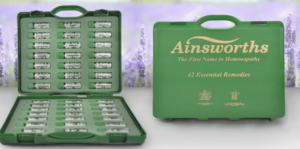
Classical homeopathic prescribing for acute complaints considers the following:
Consider homeopathic treatment like finding the right key for a lock, if after a taking the remedy for a short while* there is no response, then try another.
*A simple approach is to place one pill of the remedy selected from the first aid kit into your half litre water bottle and shake well. Sip this on and off through the day.
Remember that homeopathic medicines are absorbed through the mucous membranes of the mouth. You let the pill dissolve under the tongue or in water swish briefly round the mouth before swallowing.
If there is fever, lower back pain or a general unwell feeling, there may be a deeper seated infection.
This warrants a visit to your GP to rule out anything more serious. He/she can arrange a urine analysis and prescribe antibiotics if necessary. While waiting for an appointment trying one or two of the remedies described below is worthwhile.
In his book, The Family Guide to Homeopathy, Dr Andrew Lockie says the term Cystitis is used rather loosely.
Cystitis proper, is an inflammation that can extend along the whole urinary tract from kidney, through bladder to urethra This usually results from E.Coli bacteria transferred from the bowel (more easily caused in female anatomy).
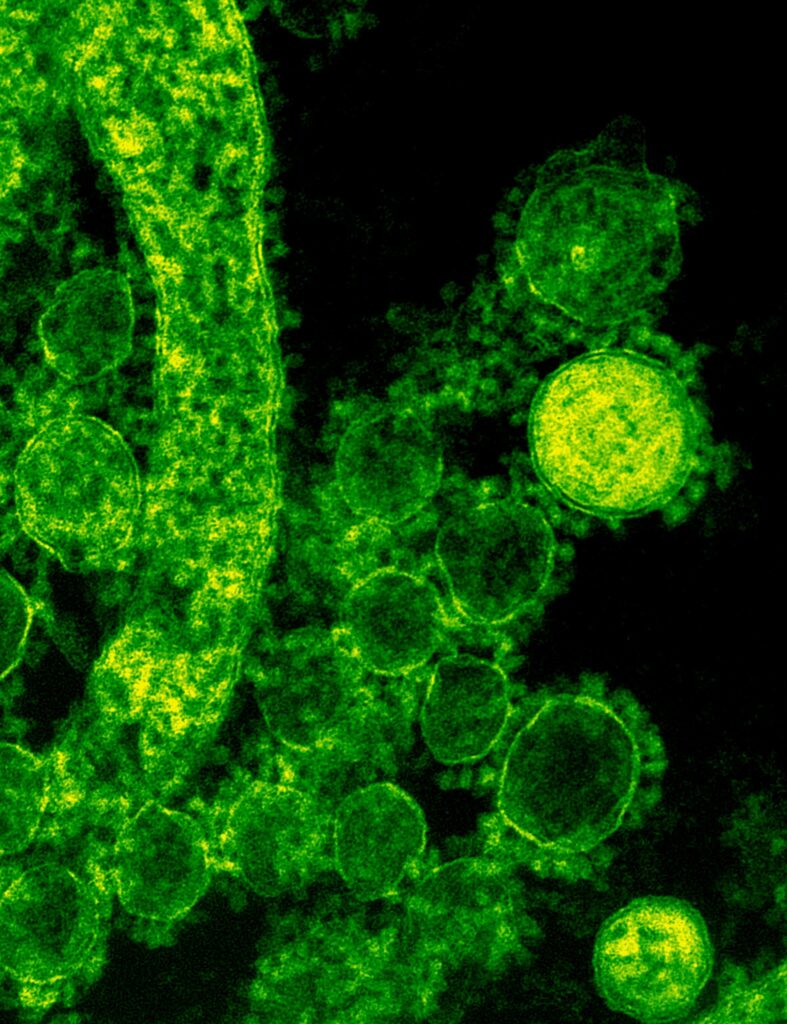
Then there is Urethritis which is an inflammation of the urethra itself.
Finally, there is Urethral Syndrome, a slightly ambiguous term. Here causation is less clear and bacteria are not considered the underlying cause.
Ainsworths (see above) and Helios sell first aid kits that contain several useful remedies.
By the way, looked after (keep in a cool place away from strong sun and heat) remedies will keep for ten years or more. The use-by date is purely a regulatory requirement.
Listed below are some remedies typically found in homeopathy that should address urinary tract infection.
The characteristic burning pain is common to most, so some trial and error may be necessary to find the remedy that best works for you. Try and think holistically – that is to say the combined mental / emotional and physical nature of the patient.
The No1 remedy to try. Severe, burning, cutting pains in the lower abdomen (neck of bladder). Cloudy dark urine . Non stop urge to urinate and an inability to empty the bladder properly.
Similar to Cantharis as regards the urinary symptoms. Stinging pains – last drops burn and smart. Symptoms worse for heat. Apis personalities tend to be thirstless, cannot think clearly, are fidgety, tearful, whining and cannot tolerate heat. Think of how one reacts to a bee sting.
Pain extends from kidney to bladder. Urethra feels as if swollen. Also resembles Cantharis and should be tried instead if there is no improvement. Arg.nit types love sweets, can be impulsive and have a way with words (‘silver’ tongue. Argent=silver).
Another remedy associated with ‘burning pains’. A major remedy in homeopathy systemically, meaning that there is general malaise (it is valuable for many aliments from skin, to food poisoning to asthma).
The patient is chilly, restless yet easily exhausted. The bladder may feel as if paralysed (so urine scanty). The remedy has a curious modality in that symptoms worsen after midnight.
Another major systemic remedy in homeopathy. Urine retention, and scanty yet constant urge. Involuntary passage. With Belladonna the patient is always hot (contrasting the chilly Arsenicum) and potentially delirious. There may be spasm and cramp-like pains which come and go.
Frequent urge to pass urine, which produces nothing (paralysis of the bladder). Then involutary passage or urine made worse with cough or sneeze. Itching around urethral opening, perhaps with vaginal discharge.
Attack comes on after sexual intercourse or after catheterisation for an operation. Burning sensation almost constant, even when not urinating.
Dr Lockie advises increasing fluid intake to 3 litres daily until urine is the normal colour and there is no discomfort. Cut down or cut out tea and coffee.
As acidity is the cause of the burning, you should try and make your urine more alkaline. He suggests taking a teaspoon of bicarbonate of soda in water twice a day.
Citrus fruits are acid and aggravate. He also notes that potatoes, tomatoes, beetroot, raw carrots, asparagus and strawberries are also problematic.
The herbal products from Vogel have been around a long time, and may also help. You may will probably be aware of the benefits of cranberry juice and possibly D-mannose.
If you are prone to urinary tract infections, then constitutional homeopathic treatment can help. If you wish to discuss this then please book a free 30 minute discovery call from my website.
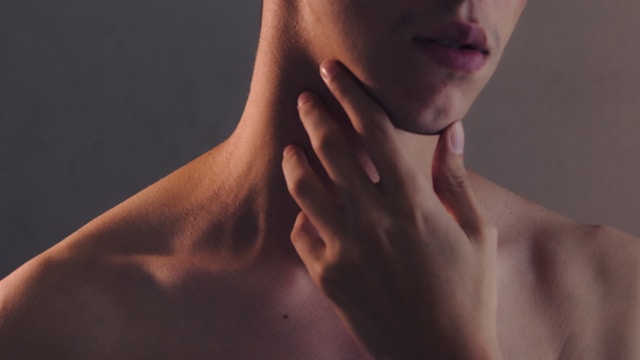
Are there homeopathic remedies for a sore throat? Indeed there are. If you follow this blog you will know that Classical Homeopathy follows the ‘law of similars’. Simply put this means that the characteristics of the ailment as experienced by the patient must match the ‘picture’ of the remedy (homeopathic medicine).
Many homeopathic remedies have a sore throat ‘picture’. Fortunately, there is overlap between the various remedies such that absolute precision is not required.
Continuing with the series on remedies in a typical home first aid kit, in this blog I focus on kit remedies that have a particular affinity to sore throats. For more on the benefits of purchasing a first aid kit of basic homeopathic remedies see my earlier blog Family Care with Homeopathy

Classical homeopathic prescribing for acute complaints considers the following:
A sore throat is a blanket term for inflammation or infection affecting the tissues of the throat. Typically affecting the tonsils and adenoids. These specialised tissues are part of the immune system which guard the airway (Pharnyx). Sometimes there is a loss of voice if the infection spreads to vocal box/chords (Larynx) located below the Pharnyx. The diagnosis reflects the location, hence Tonsilitis, Pharyngitis, and Laryngitis.
The offending microbe is often a virus, but it can be a bacterium (hence “Strep” throat).
Wikipedia gives a good overview on the orthodox treatment of tonsilitis.
The typical symptons of pain on swallowing, swollen tonsils, a dry throat and possibly fever are doubtless familiar. The formation of an abcess behind a tonsil is known as Quinsy and is particulary unpleasant and may make jaw movement painful.
Most sore throats self-resolve in a week or so. A course of antibiotics is the orthodox treatment (where the cause is bacterial) and should always be considered in urgent cases. If there is severe pain with significant difficulty swallowing or difficulty breathing NHS guidance is to go to A&E.
However, a well selected homeopathic medicine can usually reduce the duration of any infection.
By the way, it is perfectly possible and appropriate to take homeopathic medicines alongside orthodox treatment. Homeopathic medicines function in a different way to antibiotics or analgesics (pain killers). There is no conflict and in this context they are indeed complementary.
Homeopathic medicines are neither antibiotic or antiviral in the conventional sense. Rather they stimulate the immune system of the body to overcome the infection.
We need to be midful of antibiotic resistance and use our antibiotics appropriately.
If you suffer from recurring throat infections, this is probably a sign that your body is struggling to restore and maintain good health. Professional homeopathic care can assist your body’s own defences, increasing resilience and breaking the cycle of repeated infections. In homeopathy we call this Constitutional Treatment.
If you want to discuss this further, you can book a free 30 minute discovery call with me here.
Described below are ten of the homeopathic remedies useful in sore throats which you will find in most homeopathic first aid kits. The one which will engage your body’s healing process is the one which most closely matches your specific symptoms.
Consider every homeopathic medicine a ‘key’. If it fits the ‘lock’ you will get some improvement in a couple of hours. Falling asleep is a good sign of healing taking place.
If there is no improvement, there is no harm whatsoever in trying another remedy. As sore throats share characteristics, matching the general characteristics of the remedy may best aid selection.
The first three (Aconite, Belladonna and Apis) I have written about before in more general terms.
These two remedies are similar – yet different. Both can have an associated with high fever.
Aconite is often the remedy to give in the early stages of infection when the onset of symptoms is sudden. A typical cause if becoming chilled when hot.
The general characteristics of Aconite are fear, restlessness and anxiety.
The onset of symptoms is sudden; within just a few hours of exposure to the cause. The throat, it is dry, very red and constricted. Cold drinks bring some relief. There is an initial affinity for the left side (e.g. left tonsil).
The general characteristics of Belladonna are heat, redness, throbbing and burning. In a word violence. Children have high vitality which means that their immune systems respond accordingly (i.e. violently!). Belladonna is a ‘must have’ children’s remedy.
The onset of symptoms is somewhat slower than that for Aconite. Though hot, the patient feels chilly and wants to be covered (‘Aconite’ prefers the cool air).
There is anger / irritability and the affinity is for the right side (contrasting Aconite). The patient is not so thirsty but may take small sips of water (lemon flavour appeals) to ease the dry throat and the continual desire to swallow.
Apis is a homeopathic medicine made from the venom of the bee.
The general characteristics of Apis match with the effects of a bee sting: burning-stinging pain and swelling.
This is a medicine for highly inflamed and swollen tonsils, perhaps with ulceration. Swallowing is difficult. Patients are not especially thirsty but sucking ice cubes may help. This patient is restless (think ‘busy bee’).
p.s. It is also a useful medicine in urinary tract infections (along with Cantharis)
The general characteristics of Bryonia are dyness (‘DRY-BRY’), great thirst, worse for movement and better for rest. The Bryonia patient can be irritable.
The onset of illness in the Bryonia patient is slower. Perhaps 24 or 48 hours after exposure to the cause, which may be damp or autumn weather (hot days / cold nights).
This slower onset reflects the lower vitality of the patient. Where the Belladonna picture often matches the child, Bryonia is more suited to the adult. Soon there is much catarrh. Compared to Aconite, Belladonna and Apis the throat has a duller hue.
The general characteristics of Gelsemium are dizziness, drowsiness and dullness. A state of apathy and weakness (‘Worn-out’).
These characteristics often match the influenza picture. Again the onset is slower. The tonsils are red and swallowing is difficult due to muscular weakness. There is itching in the palate and nose and a sense of a lump in the throat. The voice may be weak either from the nervous state or catarrh.
(p.s. My son at about age 4 – now 34! – responded almost instantly to this remedy. I had previously tried Belladonna to nil effect and was on the cusp of calling the doctor.)
The general characteristics of Hepar Sulphuris are suppuration and hyper-sensitivity (cannot bear the affected part to be touched). This is reflected in the impulsive mental state (‘touchy’).
This is a remedy where the tonsils and glands are swollen, possibly with pus and the throat feels constricted. There is a very typical sharp, stitching, splinter-like pain in the throat (described as a stuck fishbone or like swallowing broken glass), which often affects the ears when swallowing. The throat is sensitive to touch and cold. The symptoms are relieved by hot drinks.
The general characteristics of Lachesis (from a snake venom) are loquacity (talks constantly), suspicion and again great sensitivity to touch. The collar must be very loose.
This is a remedy for Quinsy with ulcerated tonsils. The throat of the Lachesis patient is dry and has a purplish colour. The onset of symptoms is on the left side and the pain extends up into the ear. There is an inability to swallow and a curious feature that liquids cause more difficulty in swallowing than solids. Another curiosity is that symptoms tend to worsen after sleep.
The general characteristics of Merc.sol. (as typically abbreviated) are seen in the metal of the same name; the only metal that is liquid at room temperature. It reacts to temperature (mercury thermometer) and is generally unstable (trembling).
This is another remedy for Quinsy. The sore throat requiring this medicine is putrid, swollen bluish-red, perhaps with ulceration and pus. Despite the pain, saliva must be swallowed. There is a metallic taste in the mouth. Much perspiration is another feature.
The general characteristics of Lycopodium are careful, cautious, conscientious. There is apprehension with a certain lack of confidence, and a tendency to digestive troubles and flatulence.
Lycopodium throats tend to begin on the right side with swelling, suppuration and ulceration (which can affect the voice). There may be sensation of a ball in the throat. The patient is better for warm drinks.
The general characteristics of Silica are a yielding nature, with weakness and poor assimilation of nutrients. Ulceration with poor healing may result. There is great sensitivity, anxiety and touchiness.
This is a remedy for a severe type of tonsilitis where swallowing is very difficut, causing a cough. Abcesses may form yet not suppurate, ot not heal. There is a left sided affinity. The patient is chilly but desires cold food. It is a remedy that is complementary to Hepar. sulph and Merc.sol and may follow these medicines where the symptoms have not fully resolved.
****
If you regularly suffer from sore throats (or have one now that is not resolving) and wish to see if homeopathy can assist, please contact me here
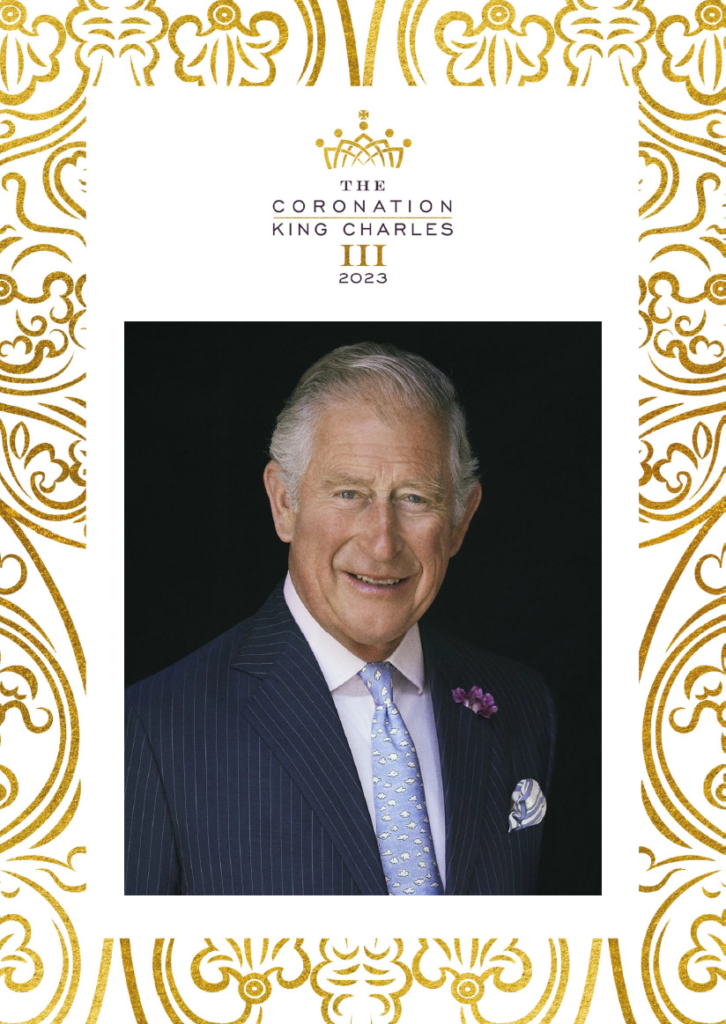
Prince (now King) Charles has long been a supporter of Homeopathy and his mother and grandmother before him.
If you live in the United Kingdom you could hardly have missed the Coronation of King Charles III, even if you so wished.
Whatever your views on monachy, few can doubt the new King’s commitment to certain causes.
Some years ago when Prince Charles, he co-authored wrote a book titled ‘Harmony’. I think it rather good. It is a theme that clearly dominates his philosophy of life; namely that we should strive to live in harmony with nature.
One quote in the opening pages is perhaps a good summary of his thinking:
‘if people are encouraged to immerse themselves in Nature’s grammar and geometry they are often led to acquire some remarkably deep philosophical insights.’
His studies into this ‘grammar and geometry of nature’ have resulted in him having strong views on farming, architecture and health. Needless to say he has faced more than a little criticism across the years.
Nevertheless many are at least sympathetic to the principles, and increasingly so. Whatever you may think, he does ‘walk the talk’ and on his farms and estates demonstrates what is possible.
Although best known for his views on architecture and the rural economy, Prince – now King – Charles has long championed Homeopathy.
If there was ever a cause for which a ‘thick skin’ is required, this is probably the one!
As Prince Charles, he was Patron of the Faculty of Homeopathy, and a supporter of Homeopathy at Wellie Level (HAWL) which works with the farming community. You can read his letter of support on the HAWL website (go to the bottom of the HAWL home page).
With justification, in the book ‘Harmony’ he challenges any who consider homeopathy as just placebo medicine, to explain why it works on animals.
As an aside, the principles of biodynamic agriculture share common ground with homeopathy also. Thus, it is not just humans and animals that benefit but plants also.
Sadly the scientific-materialist mindset resists thinking ‘outside of the box’. That ‘box’ is the biochemical model, that sees us (and animals and plants) as just sophisticated chemistry sets. A rather narrow view, in my opinion, and about which I have penned a blog before.
Homeopathy has a Royal History
Homeopathy has a long history within the Royal Family. In his book ‘Samuel Hahnemann, The Founder of Homeopathic Medicine’, Trevor Cook PhD FRSC, a former managing director of Nelson’s Homeopathic Pharmacy in London (est.1860), believes that the wife-to-be of King William IV, Princess Adelaide of Saxe-Coburg-Meiningen, was the first to use homeopathy.
Her uncle, Duke Ernst of Saxe-Coburg-Gotha, brought Hahnemann to Geogenthal (Thuringia, Germany) in 1792 as physician to be in charge of an asylum there. Queen Adelaide was an aunt of Duke Ernst’s second son Prince Albert who married Queen Victoria.
More recently, Queen Mary (1867-1953), Consort to King George V, is known to have revived the family interest in homeopathy.
Trevor Cook goes on to write:
‘Royal patronage now spans more than 160 years to include King Edward VIII (1894-1972) who, as Prince Edward, Prince of Wales, invariably carried his homeopathic medicines in powder doses in his pocket. His brother, King George IV (1895-1952), named one of his racehorses ‘Hypericum’ after the King had successfully been treated by the medicine’.
Hypericum is a homeopathic remedy to used treat nerve damage (e.g. crushed fingers).
A small box of homeopathic remedies also accompanied our late Queen Elizabeth II on her many travels.

Ainsworths Homeopathic Pharmacy holds the Royal Warrant to this day as you can see on the cover of their remedy kit.
Long live the King!
Long live Hahnemann!
I heard someone on the radio saying that we are living healthier and longer lives than ever before. In fact it is a mantra that is often stated. We take such a statement at face value because it seems to make sense, after all the average lifespan in the UK is just north of 80 years which is a good deal greater than the Biblical “three score years and ten”. And of course childhood mortality is now very low. So far, all for the good.
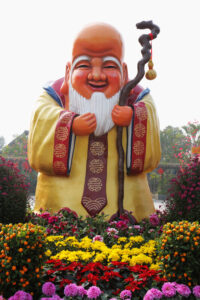
On the other hand, back in ‘lockdown’ when I cycled out into the New Forest and took a wander round a few rural churchyards, I was rather surprised to see people living to a good age a century of more back. Some into their eighties, which I suppose – being the strongest consitutions – would be ninety year olds of today.
I find much the same in rural churchyards I have visited elsewhere, though my analysis is hardly comprehensive.
Curiously, 34 seemed to be a hazardous age in one cemetery in the Outer Hebrides, my guide – a local man – was 43, and so I congratulated him on his achievement!
But seriously, it got me thinking about health. Are we truly healthier? What is the secret to living longer and healthier?
One of the wonders of the internet age is the ability to do a little armchair analysis. The NHS statistics service (NHSBSA) tells us that the cost of medicines prescribed in primary care in England was £9.4 billion in 2020/21, 55% of the total drug expenditure (hospital prescriptions making up the other 45%).
Seems to me that if we were truly living healthier lives, that longevity would not come at this cost.
That my wanderings have been into rural cemeteries in Britian is significant. I suspect the story in the industrial cities would be very different. Factory life was harsh. Social class was and remains today an important factor in health and lifespan.
So, my hypothesis could stand or fall on the data I choose to select (a subtlety not lost on those who write ‘scientific’ papers today, by the way).
Still, I will hazard a guess that rural communities who lived by the seasons, in unpolluted environments, ate simply, and worked hard but suffered low stress, were quite healthy. At a time when there was not much medical intervention either.
We need to understand why our drugs budget is so high. NHSBSA have some revealing statistical collections that tell us that:
Needless to say, the most deprived areas received the higher proportion of the prescriptions.
Drug cost is just a part of the picture. The drugs are a short term fix. In the longer term health conditions become more complex and more costly, especially where in-patient care is required.
How do you react to these figures?
Cardiologist Dr Assem Malhotra has some interesting observations – here is a recent interview with Dr Ken Berry MD on YouTube. It is worth a watch.
It should not come as a great surprise that the Malhotra and Berry conclude that the fundamentals of health for most of us are quite simple
I have written before about colour and diet, here is a nice photograph to illustrate the point.

Were it possible to go back in time and apply a light touch of modern medical practice, I rather think the longevity of our ancestors would match that of today, with better underlying health. By light touch, I mean simple steps to reduce infant death, handle trauma, and acute life threatenting conditions.
Towards the end of the interview Dr Malhotra explains the true cost to health of poor diet.
In this topsy turvy world is it not strange that ultra-processed food is cheaper than fresh simple food? Deprivation and disease go hand in hand.
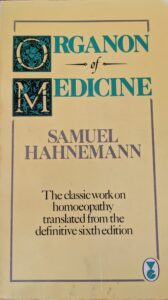
I suppose this blog should be about homeopathy, yet no mention thus far. Well, here is a snippet.
Last month I wrote about Dr Samuel Hahnemann, generally considered the founding father of homeopathic medicine, who makes it very clear in his profound book, The Organon of Medicine that removing obstacles to cure is the first step to health. Here are his words written in the early 1800s:
It is obvious that every reasonable physician will first of all remove the causa occasionalis; after that the indisposition usually disappears on its own.
Organon of Medicine, Aphorism 7 footnote (in part) – Dr Samuel Hahnemann
It’s the old saying “a stitch in time saves nine”. So what might you sew (or sow) in 2023?
https://www.instagram.com/p/CnMSdUPo5JW/
This blog is about remembering the past and specifically the benefits of homeopathy.
The thing is we do forget. The eleventh hour of the eleventh day of the eleventh month is soon upon us and it serves indeed as a reminder of past conflicts.
But I suspect for most youngsters the two world wars might as well be the Battle of Hastings or Waterloo, though surviving film footage does resonate across time. My late father served in the western desert and Italy in WW2. Were he alive he would be now 106!

Of course it is not just about conflicts distant in time. I read this weekend the report of a recent train derailment (2001) in Scotland, fortunately without casualties. The investigators found that it had much in common with the 1988 Clapham rail disaster (wiring error) which cost the lives of 35 people.
The late Trevor Kletz, whom I once met in my Chemical Engineering days, wrote many books on the theme of “What went wrong” – to quote one title. It had a sequel, “Still going wrong”, reminding readers of the shortnes of corporate memory.
I recall him quoting a boy on the radio who notably said that “he didn’t have a memory only a ‘forgett-ory'”. Quite.
Alas, we forget the past and consequences follow.

Not all amnesia is entirely accidental. All too often the past is denied; inconvenient truths and wisdom brushed aside. The reasons are mixed, there may be gain (corporate or personal), or maybe just a biased manner of thinking.
Just over a century ago John D Rockefeller and Andrew Carnegie were the equivalent of today’s Bill Gates, Mark Zuckerberg and more. Through their wealth they funded various charitable foundations that had great influence.
I don’t wish to say that they were bad people. Carnegie, whose humble beginnings were in Dunfermline, Scotland funded many public libraries throughout that land and beyond (the link opens with a picture of my local library in Rutherglen, where I was born).
However, what the poweful have is influence to move society in the direction they believe is best. In this towards what we know as western scientific medicine or allopathy (not that homeopathy is unscientific – anything but).
The gentleman was an a academic engaged by the aformentioned to look into medical training in the USA.
Here is a nice summary of his contribution.
Medicine is generally recognised as a balance between art and science. Science today is solely focused on the material world, a subject I have touched on before. However, human beings are more than a bundle of molecules.
There is a growing concern today that the application of science is too narrow and you may care to read the Galileo Report of the Scientific and Medical Network.
The picture below is of a monument located in the centre of Washington D.C. The first monument in that city to a non-US citizen (he was German). Who was this man to get such a grand monument?
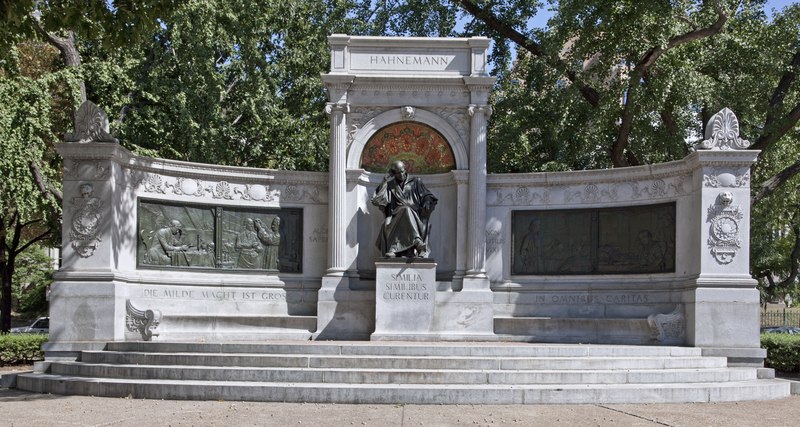
Hahnemann (1755-1843) is considered the founding father of homeopathy. A scientist before the term was in general use and polymath (he knew many languages). His medical work was of huge significance. Here is a short summary from the Journal of the Royal Society of Medicine. Yet you wont find mention of him in western medical schools today.
Homeopathy was a major force in America at the start of the twentieth century. It’s demise stems from the influence of Abraham Flexner and his sponsors.
Medicine was set a path to that which we see today. There have been many benefits, but all in the garden is not rosy as the burden of prescription costs to the NHS might attest.
I suggest – well obviously I would! – that we need to look again not just at homeopathy, but naturopathic, and medicine in all its forms practiced throughout the world.
Medical science today is too narrow in its application and the ‘art’ has all but disappeared (though many physicians still recognise the art in what they do).
Hahnemann’s seminal work is the Organon of Medicine, which is still in print. The opening aphorisms shown below speak to us through time. The rest is not bad either – actually, very profound.
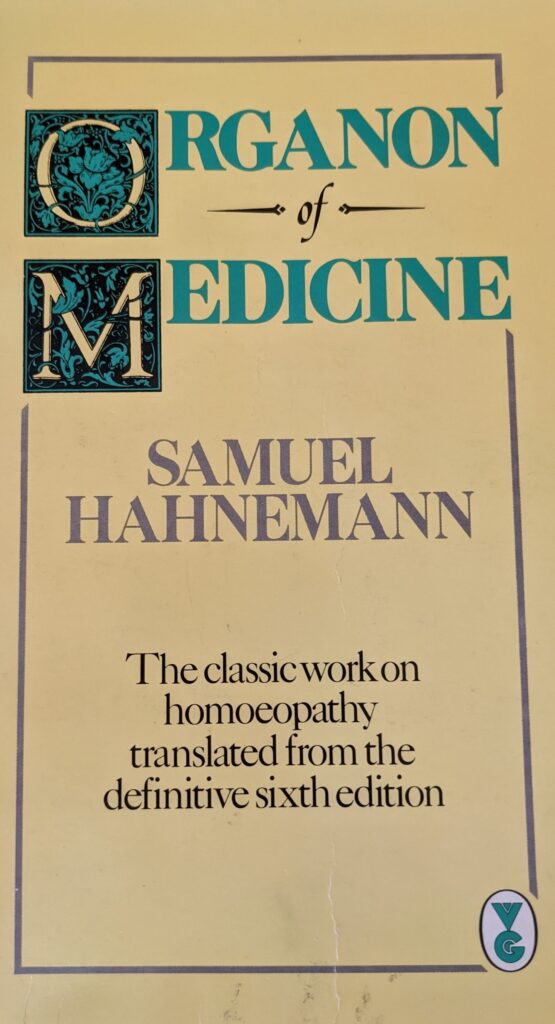
Aphorism 1: The physician’s highest calling, his only calling, is to make sick people healthy – to heal as it is termed.
Aphorism 2: The highest ideal of therapy is to restore health rapidly, gently, permanently; to remove and destroy the whole disease in the shortest, surest, least harmful way, according to clearly comprehensible principles.
Dr Samuel Hahnemann, Organon of Medicine
Symptoms are key to treatment in Homeopathy just as they are in orthodox (allopathic) medicine, but the interpretation is different. Winston Churchill once said that “Jaw, Jaw is better than War, War” and I suggest that his sentiment has some relevance in the practice of medicine.
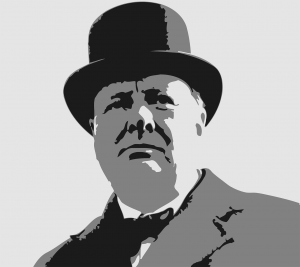
Symptoms are symptoms but the interpretation can be different.
Take a look at any text on modern drug classes and you can clearly see that modern western medicine is on a war footing. There are anti-biotics; anti-depressants; anti-fungals; anti-inflammatories; anti-virals…just as we have anti-aircraft; anti-tank; anti-personnel and so on.
This is “War, War”.
Clearly modern pharmaceuticals are effective, but they are not always curative in the long term. There is quite a queue in my local chemist for repeat prescriptions ..
Most modern drugs have not been around that long, the first antibiotics only appeared in the 1930s. We tend to forget that.
Yet mankind has suffered sickness, for thousands of years…and been healed. Naturopathic and hydropathic “cures” were once the norm..at least for those who could afford it. Not that such treatments were always successful either.
Let’s be honest, symptoms are inconvenient at best, and often worse – so a magic bullet has much in its favour – especially in an impatient age.
The trouble is that the “enemy’s” protest may have virtue. Perhaps a little “jaw jaw” might bring about a longer lasting peace?
Of course to “jaw jaw” you have to understand the language.
Symptoms are the body’s language. The attempt of the body to cure itself.
Easier then to shoot first, and ask questions later! This is suppression.
But what if the “enemy” regroups and shoots back. An uneasy truce might be the best result.
Homeopathy is “Jaw, Jaw” medicine. It is guided by the “Law of Similars” – often simplified to “like cures like”. Homeopathically this means finding the medicine that best imitates the symptom picture.
The subject is covered in more detail in this article by the late Dr Stuart Close:
The general philosophy in homeopathy, naturopathy, and other traditional / complementary therapies is that the body tells you what it needs to cure itself.
Therefore, rather than supressing the symptoms, they should be encouraged. A sort of swords into ploughshares approach!
Here is a simple example:
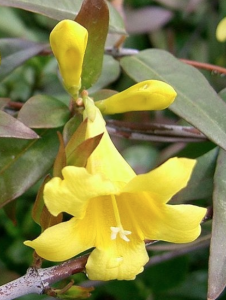
Gelsemium, homeopathically prepared from a plant of the same name, has particular characteristics that come from “proving” the medicine on healthy people, knowledge of its herbal properties, clinical experience and so on.
Students of homeopathy learn the phrase “droopy, drowsy and dull”, as the Gelsemium symptoms are just that:
It is one of a number of medicines that have helped Covid patients – but ONLY if their symptom picture matches. The remedy stimulates an immune response that reinforces the action of the body and speeds up cure.
It is a useful remedy which you will surely find in any homeopathic first aid kit, such as shown in one of my recent blogs
*Interestingly it is said that, Gelsemium – presumably in herbal form – was once used to instil fearlessness in soldiers . In truth this “courage” was more likely to be loss of fear through instilled apathy (what do I care if I live or die…)